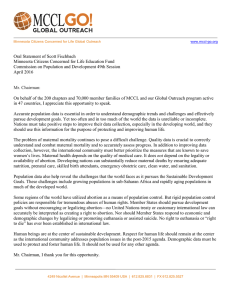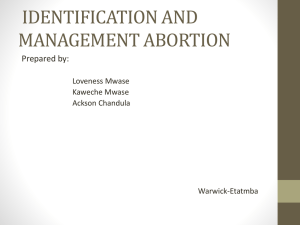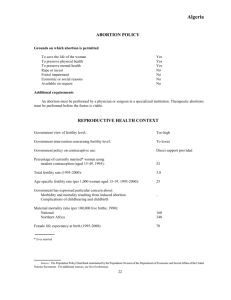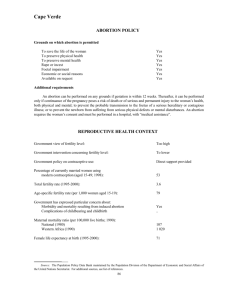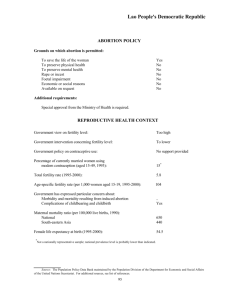maternalhealth
advertisement
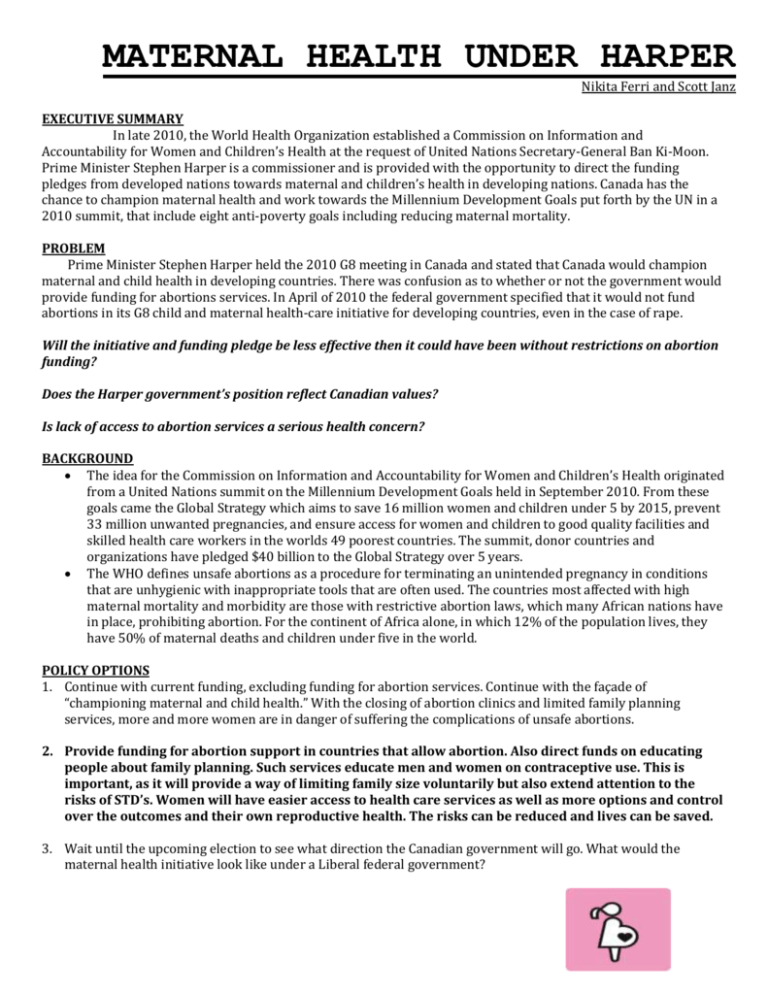
MATERNAL HEALTH UNDER HARPER Nikita Ferri and Scott Janz EXECUTIVE SUMMARY In late 2010, the World Health Organization established a Commission on Information and Accountability for Women and Children’s Health at the request of United Nations Secretary-General Ban Ki-Moon. Prime Minister Stephen Harper is a commissioner and is provided with the opportunity to direct the funding pledges from developed nations towards maternal and children’s health in developing nations. Canada has the chance to champion maternal health and work towards the Millennium Development Goals put forth by the UN in a 2010 summit, that include eight anti-poverty goals including reducing maternal mortality. PROBLEM Prime Minister Stephen Harper held the 2010 G8 meeting in Canada and stated that Canada would champion maternal and child health in developing countries. There was confusion as to whether or not the government would provide funding for abortions services. In April of 2010 the federal government specified that it would not fund abortions in its G8 child and maternal health-care initiative for developing countries, even in the case of rape. Will the initiative and funding pledge be less effective then it could have been without restrictions on abortion funding? Does the Harper government’s position reflect Canadian values? Is lack of access to abortion services a serious health concern? BACKGROUND The idea for the Commission on Information and Accountability for Women and Children’s Health originated from a United Nations summit on the Millennium Development Goals held in September 2010. From these goals came the Global Strategy which aims to save 16 million women and children under 5 by 2015, prevent 33 million unwanted pregnancies, and ensure access for women and children to good quality facilities and skilled health care workers in the worlds 49 poorest countries. The summit, donor countries and organizations have pledged $40 billion to the Global Strategy over 5 years. The WHO defines unsafe abortions as a procedure for terminating an unintended pregnancy in conditions that are unhygienic with inappropriate tools that are often used. The countries most affected with high maternal mortality and morbidity are those with restrictive abortion laws, which many African nations have in place, prohibiting abortion. For the continent of Africa alone, in which 12% of the population lives, they have 50% of maternal deaths and children under five in the world. POLICY OPTIONS 1. Continue with current funding, excluding funding for abortion services. Continue with the façade of “championing maternal and child health.” With the closing of abortion clinics and limited family planning services, more and more women are in danger of suffering the complications of unsafe abortions. 2. Provide funding for abortion support in countries that allow abortion. Also direct funds on educating people about family planning. Such services educate men and women on contraceptive use. This is important, as it will provide a way of limiting family size voluntarily but also extend attention to the risks of STD’s. Women will have easier access to health care services as well as more options and control over the outcomes and their own reproductive health. The risks can be reduced and lives can be saved. 3. Wait until the upcoming election to see what direction the Canadian government will go. What would the maternal health initiative look like under a Liberal federal government?
